Table of Contents
Are you stuck in a career that doesn’t inspire you? Or a relationship that doesn’t excite you? Or a lifestyle that doesn’t fulfill you?
Of the many excuses and issues for this complacency, one problem that surfaces the most is lack of motivation. This post is all about hacking motivation with nootropics.
Because to make matters even worse – lack of motivation to change things that could make your life better often end up making you feel guilty and depressed.
And if left unchecked, a slow but steady spiral into long-term guilt, poor self-esteem and ongoing depression.
So what can you do to boost motivation? And where does that energy come from? That’s what we’re going to explore in this post.
We each have a limited amount of time on this planet. And no matter what stage you are in life. Realize this body will not live forever. It’s time to take back control. And learn how to change up the things you can change to create the life that you want to live.
This is where nootropics may be able to step in to boost brain function. And providing the fuel you need to steer you on a new path toward the things you want to achieve.
The Neuroscience of Motivation
Dopamine and Motivation
Researchers have long known that the neurotransmitter dopamine is involved in pleasure and reward. More dopamine in your brain results in feelings of greater pleasure. And the presence of dopamine in your brain push you to seek this ‘reward’ of pleasure.
But researchers have recently discovered that dopamine also regulates motivation.
Dopamine provides the initiative and perseverance
needed to go after what is important to you.
In 2012, a team at Universitat Jaume I of Castellón changed the thinking and prevailing theory on dopamine. Mercè Correa said, “It was believed that dopamine regulated pleasure and reward and that we release it when we obtain something that satisfies us.
But in fact, the latest scientific evidence shows that this neurotransmitter acts before that. It actually encourages us to act. In other words, dopamine is released in order to achieve something good or to avoid something evil.”[i]
Dopamine levels vary by individual. Some people are more persistent than others when going after goals. Which you’ve likely noticed in the people around you when it comes to athletics, school and work.
Those with higher dopamine levels get more done.
Dopamine helps you to maintain the level of activity needed for what you intend. Whether it’s positive or negative. Depending on what you’re after. The goal to be a good student, or to abuse drugs.
High levels of dopamine could also explain the behavior of sensation-seekers because they are motivated to act. You see this in extreme sports. Or wildly successful musical performances.
Correa went on to say, “Depressed people do not feel like doing anything and that’s because of low dopamine levels”.
This lack of energy and motivation is also related to several debilitating health problems. Often associated with mental fatigue. Diseases like Parkinson’s, multiple sclerosis and fibromyalgia.
Slacker or Go-Getter
Another study by a team at Vanderbilt University used a PET scan to map the brains of go-getters and slackers. And they found that those willing to work for rewards had higher levels of dopamine in the two areas of the brain known to be involved in motivation and reward (striatum and ventromedial prefrontal cortex).
On the other hand, slackers had higher dopamine levels in an area of the brain called the anterior insula. This area is involved in emotion and risk perception.
This last observation came as a complete surprise to researchers. Because more dopamine in the insula is associated with a reduced desire to work. Even if it means earning less money.[ii]
Glutamate AMPA-Receptors and Motivation
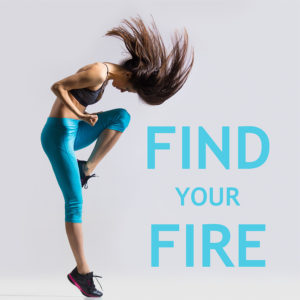 Turns out that dopamine is not the only neurotransmitter involved in motivation. In 2014, researchers discovered that glutamate neurons in a specific region of your brain (dorsal raphe nucleus) activate dopamine neurons in the dopamine-reward pathway.
Turns out that dopamine is not the only neurotransmitter involved in motivation. In 2014, researchers discovered that glutamate neurons in a specific region of your brain (dorsal raphe nucleus) activate dopamine neurons in the dopamine-reward pathway.
Glutamate receptors are associated with neural communication, memory formation and learning. When glutamate AMPA-receptors in this area of the brain (dorsal raphe nucleus) are stimulated. It ends up activating the dopamine reward system.[iii]
The researchers followed this pathway all the way through using special tracers and labeling compounds.
The reward (or motivation) pathway starts with stimulation of glutamate AMPA-receptors that connect to dopamine neurons. Which in turn follows the pathway to the nucleus accumbens. The brain structure linked to motivation, pleasure and reward.
The Motivation Missing Link in Nootropics
Common wisdom in nootropic circles (so far) advise us to boost dopamine to hack motivation. It is true that as dopamine levels rise in the nucleus accumbens (reward pathway), motivation, pleasure and reward are all affected.
But this same common wisdom would have you believe that if you boost overall dopamine levels in your brain, you’ll increase motivation. And it’s just not true.
In fact, if you increase dopamine levels too much, excess dopamine converts to norepinephrine. You get irritable and can’t sleep.
The missing link in this dopamine → reward → motivation pathway are glutamate AMPA-receptors.
Rather than boosting overall dopamine levels and hoping for the best . We need to encourage stimulation of glutamate AMPA-receptors to in turn, fire up dopamine neurons. And send dopamine on its way to the nucleus accumbens.
Best Nootropics for Motivation
We know that dopamine is critical to motivation. In the lab, researchers have demonstrated that without enough dopamine, rats starve themselves to death. Despite having access to food.[iv]
But in our world it’s doubtful that you have problems with motivation to eat. Or drag yourself out of bed in the morning. So basic dopamine levels are likely not an issue.
But what about changing course in an unfulfilling career? Or getting started on that book you want to write? Or plowing through boring and tedious work that’s just part of the job?
To successfully tweak and boost motivation, you need to address the efficiency of the dopamine – motivation pathway. And this is where many of the racetam nootropics come to the rescue.
Here’s a brief list of the most potent nootropics that we’ve discovered so far that will boost motivation. First on this list is ensuring we have enough dopamine available because it’s an integral part of the dopamine – motivation system. The rest of this list of nootropics are supplements that can influence your glutamate AMPA-receptors. And modulate the effectiveness of the main neurotransmitters that affect the motivation pathway in your brain.
L-Tyrosine
- L-Tyrosine – Your brain converts L-Tyrosine to L-DOPA which then produces the neurotransmitter dopamine. The unused dopamine is then further converted into the neurotransmitters norepinephrine (noradrenaline) and epinephrine (adrenaline). This triad of neurotransmitters are collectively referred to as “catecholamines”. L-Tyrosine enhances working memory and executive function in the prefrontal cortex. It helps with creative flow states, is fuel for inspiration, motivation, an extra boost in cognitive function like flexibility, and the kind of “convergent thinking” you do in multiple choice exams.
Aniracetam
- Aniracetam – This member of the racetam-family of nootropics is very well known for helping anxiety and depression. And one of my favorites. This fat-soluble ampakine nootropic affects acetylcholine levels in the brain. It activates D2 and D3 dopamine And Aniracetam modulates AMPA receptors.[v] Leading to better cognition, memory and motivation.
Iodine
- Iodine – This essential trace element combines with tyrosine to form thyroid hormones T4 and T3. Thyroid hormones affect every cell in your brain and body. Within your brain, T4 is converted to T3 by selenium which then affects gene expression controlling metabolism within cells. And activates dopamine, norepinephrine and epinephrine.[vi]
It’s highly unlikely that you’ll see Iodine on any nootropic list to boost motivation. But a malfunctioning thyroid which is often caused by not enough iodine results in poor cognition, difficulty learning, problems with recall, depression, anxiety and certainly a lack of motivation.
Nefiracetam
- Nefiracetam – This fat-soluble racetam nootropic is structurally similar to Aniracetam. Nefiracetam increases the amount of time calcium channels in neurons remain open. Enhancing signaling in the pathway critical for long-term potentiation and forming long-term memories. Nefiracetam also potentiates protein kinase C alpha (PKCα) which is involved in long-term potentiation (LTP).[vii] PKCα is dependent on glutamate signaling. And Nefiracetam activates Ca2+/calmodulin-dependent protein kinase II (CaMKII) which is critical in memory formation.[viii] Again dependent on glutamate signaling. Remember, glutamate signaling fires dopamine neurons which leads to a boost in motivation.
Noopept
- Noopept – This peptide-derived nootropic related to the racetam-family, Noopept increases BDNF, stimulates dopamine, nicotinic and serotonin receptors.[ix] Boosting energy, cognition, memory, logical thinking, mood and motivation. Noopept also boosts Alpha and Beta brain wave You become calmer and more creative. It’s easier to go into a flow state. And you are prone to making innovative and resourceful decisions.
Oxiracetam
- Oxiracetam – This water-soluble ampakine nootropic in the racetam-class of compounds modulates AMPA receptors.[x] Oxiracetam increases acetylcholine And boosts ATP synthesis in brain cells. Oxiracetam significantly improves cognition, memory, sensory perception, reflexes and motivation.
Phenylpiracetam
- Phenylpiracetam – This water-soluble nootropic in the racetam-class of compounds is known for its stimulatory effects. It increases the density of acetylcholine (ACh), NMDA, GABA and dopamine receptors in the brain.[xi] More receptors mean more binding sites for neurotransmitters that affect memory formation, cognition, sleep, mood and motivation. Similar to Noopept, Phenylpiracetam has been shown in clinical studies to affect Alpha and Beta brain waves. And like Ritalin or Adderall, this nootropic increases the effectiveness of dopamine in your brain. Increasing alertness, decision-making capability, cognition and motivation.
Piracetam
- Piracetam – The first racetam ever developed, this nootropic modulates AMPA and NMDA receptors.[xii] And boosts the flow of acetylcholine (ACh), sensitivity and density of ACh receptors in your brain. Piracetam also boosts cerebral blood flow. Delivering more oxygen and nutrients to neurons. Improving neural signaling, cognition, memory, focus and motivation.
Pramiracetam
- Pramiracetam – A derivative of and more potent than Piracetam, Pramiracetam stimulates choline uptake in your brain. And has a profound effect on the synthesis of the neurotransmitter acetylcholine (ACh).[xiii] Boosting energy levels, providing focused stimulation for your brain energy for better mental drive and motivation.
Resveratrol
- Resveratrol – Resveratrol is a polyphenol that some plants produce in response to stress, such as injury or fungal infection. Recent research shows this polyphenol works like an ampakine nootropic in the brain. Resveratrol is an inhibitor of enzyme PDE4 (Phosphodiesterase-4).[xiv] Studies demonstrate that when you inhibit PDE4, you raise levels of cAMP in the brain. cAMP-dependent pathways in the brain activate AMPK (AMP-activated protein kinase).Inhibiting PDE4 and boosting cAMP also makes the effect of normal dopamine production more effective. Boosting processes in this stream of chemical pathways in the brain increases learning, memory and motivation.
Rhodiola Rosea
- Rhodiola Rosea – In Russia, Rhodiola Rosea is widely used as a remedy for fatigue, poor concentration, and decreased memory. It’s also believed to make workers more productive. Research shows Rhodiola can increase attention to detail-oriented tasks by improving concentration over a prolonged period. The ideal study nootropic. Rhodiola Rosea stimulates your nervous system to fight fatigue that stifles mental clarity. And studies show it even saves injured neurons. And encourages the growth and development of brain cells (neurogenesis).[xv]Any kind of fatigue you experience – regardless of source – Rhodiola Rosea is like your “magic bullet”. Mood, energy, stamina, concentration and motivation can all increase with a dose of this herb.
Sulbutiamine
- Sulbutiamine – Synthesized in the lab from Vitamin B1 (thiamine), Sulbutiamine is another favorite of mine because it boosts memory, motivation and is a heck of an antidepressant. Thiamine is essential for producing the neurotransmitter acetylcholine (ACh)[xvi]. ACh is used to relay messages between neurons in your brain. And is critical for cognition, learning, memory and motivation.
Final Notes on Motivation
If you’ve ever felt mentally drained after writing an exam, an intense study session, a misunderstanding with your partner, or working out a business problem – select 2 – 3 nootropics from the list above for your nootropic stack.
Or save some time and money and get a bottle of Mind Lab Pro® which contains an effective dose of N-Acetyl L-Tyrosine to raise dopamine levels in your brain. As well as Rhodiola Rosea which is widely used as a remedy for a lack of motivation, fatigue, poor concentration, and decreased memory.
And if a lack of energy is holding you back, try a bottle of Performance Lab® Energy which helps your brain produce the fuel it needs for better motivation.
Energy and motivation go hand-in-hand.
When I’m energized, it usually translates into motivation to get things done. When energy stores are depleted in my brain and body, I’m burned out and nothing much is going to happen.
Mental fatigue has a variety of causes. Depleted neurotransmitters can cause fatigue as well as a host of other issues. A lack of Adenosine Triphosphate (ATP) which is the energy source for brain cells is another cause of mental fatigue. And leads to neurodegenerative disease.
Hormones that are out of balance can cause fatigue. And poor cerebral circulation which provides oxygen and nutrients to brain cells can result in fatigue.
The amount of available mental energy in your brain has a direct influence on your cognitive performance.
So now that you know how the motivation pathway works in your brain. Add two or three of the natural nootropics suggested in this post. Or just get some Mind Lab Pro® and Performance Lab® Energy. And instead of feeling guilty for being a slacker, join the go-getters who improve cognitive function and are living life to the fullest.

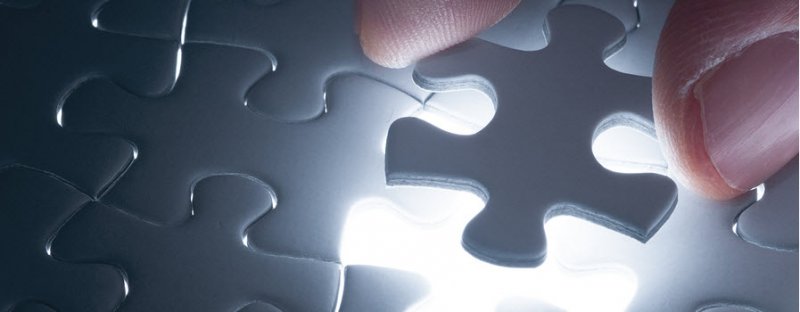


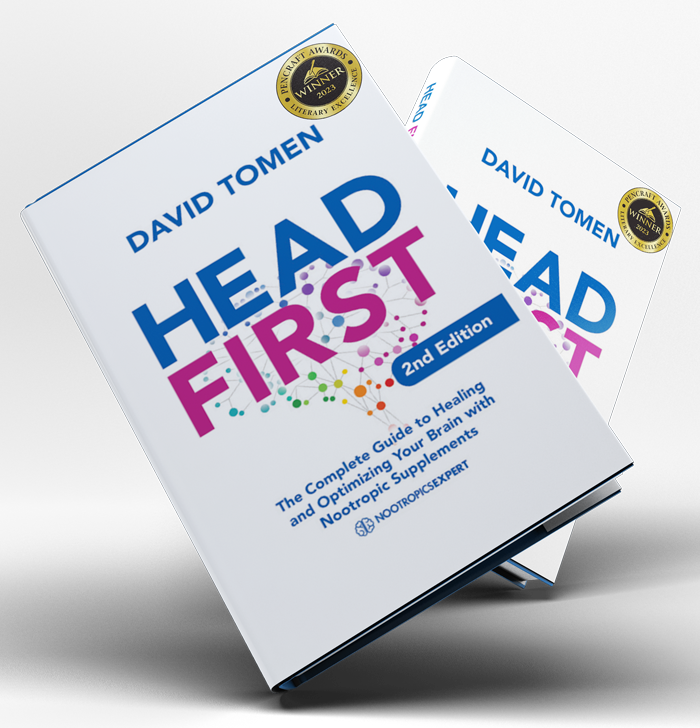
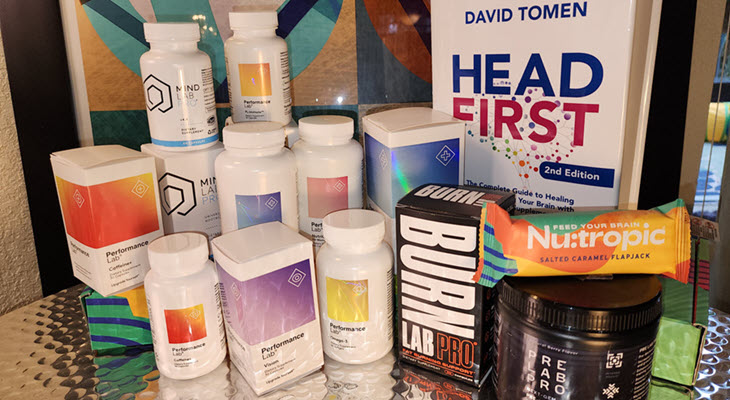
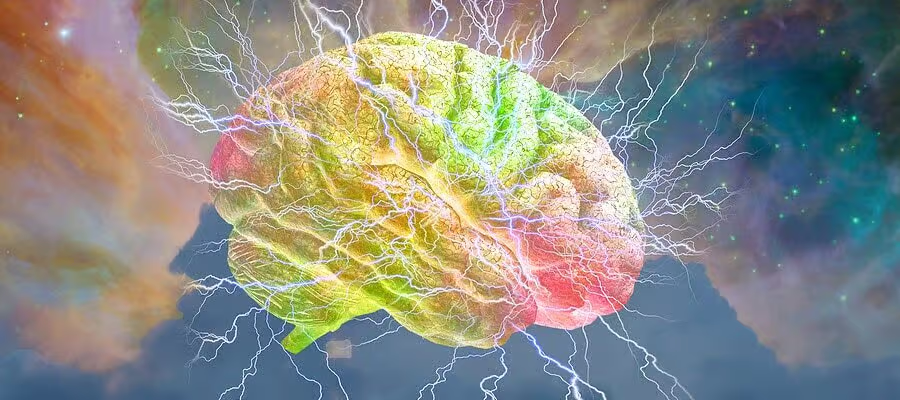
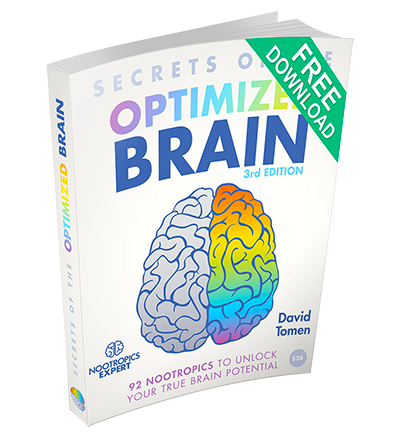
Join The Discussion - 134 comments
Howard
July 21, 2020
Hi David,
OMG! Lack of motivation seems so much more on point than other considerations such as 1. lack of focus or 2. brain fog/ fatigue or any of a houndred terms I and others have labeled me with.
I can understand why my Anterior Insula is a cave to which I retreat for comfort even as my deficiencies lead to the rest of the world falling down around me.
This article on motivation is another point of possible salvation.
I am in the process of purchasing some of the items referenced in your article.
I have a jug (500 G) of L-Glutamine. Can I use it as a Glutamate source?
David Tomen
July 22, 2020
Howard, happy to hear that this hit home for you. Remember, the key here is to activate AMPA receptors which in turn activates the dopamine/reward/motivation pathway in your brain. Miss the first part and no motivation.
L-Glutamine is the main precursor for the production of the neurotransmitters glutamate and GABA (γ-aminobutyric acid) in your brain. So yes, you can use L-Glutamine to raise glutamate.
Howard Walters
July 23, 2020
Thank you David.
I have started 5g of L-Glutamine with 800 NALT two times per day. waiting for results and the delivery of some of the Motivation nootropics you mentiones in the article.
Do we wait days for nootropics to produce effects or are their intended effects relatively immediate.? In other words, are we waiting for the nootropics to reach a certain concentration or should we see relatively immediate effects once the nootropics are in the blood and engaged with the relevant chemical pathways?
David Tomen
July 24, 2020
Howard, good question and some of the amino acids like NALT begin to work within 15 minutes. But continued daily use does help your brain eventually stabilize into a new, healthier ‘normal’.
So some of the effects you should feel right away. And it gets better the longer you use these supplements.
Howard
July 24, 2020
David,
I take 1500 mg of Berberine and 1200 mg of Quercetin devided in 2 doses ( early morning and mid afternoon). These effectively help my desire to avoid hunger and eat only one meal per day. I have not measured it lately but I believe they keep me in ketosis until my feeding window at 4 to 8 pm.
My question is how might Berberine and Quercetin affect the motivation nootropics mentioned in the article above?
David Tomen
July 24, 2020
Howard, Berberine has been shown to activate AMPA receptors and which I didn’t include in the suggested nootropics above because I wrote this post before I reviewed Berberine. I should add it to the options and thanks for the reminder.
I haven’t done the research on Quercetin yet. But a quick search hinted that it may be effective as well.
Hakan
July 5, 2020
Hi,
First of all thank you for such a great, detailed nootropic site with your own experiences.
I am currently using modafinil and it seems to work. Also i am planning to use rhodiola rosea for chronic fatigue, depression and motivation.
Should i add ginseng besides these? Should i use all of them together?
What would you suggest with rhodiola rosea to use for motivation and energy?
I can’t find all the substances in my country as some of them are forbidden. So i can find ALCAR, L-tyrosine, ginseng, rhodiola rosea, modafinil, piracetam etc.
Thanks
Regards
David Tomen
July 6, 2020
Hakan, the only things missing from your stack to support Modafinil use is a good choline supplement like CDP-Choline (Citicoline), a high quality B-Complex supplement and DHA (Omega-3).
Please see the individual reviews for each of those to understand why I’m recommending them. And yes, you can use this stack together but be careful with the dosage of each. Use the lowest recommended dose to start and be aware that some of these nootropics need to be used at least twice or 3-times per day. Especially if stacked with Modafinil.
Hakan
July 6, 2020
Thank you for the fast reply David.
So my stack will be like this:
Modafinil, rhodiola rosea, ginseng, DHA, CDP-Citicoline, B-complex
So using all of them together won’t cause any trouble right?
Also didn’t understand this:
“be aware that some of these nootropics need to be used at least twice or 3-times per day. Especially if stacked with Modafinil.”
So should i use more dosage like twice or 3-times per day? or should i split the dosage to 2-3?
Thank you
David Tomen
July 7, 2020
Hakan, see my response to your first question in the Rhodiola Rosea thread please before you use Rhodiola.
DHA 1,000 mg is dosed in the morning, Ginseng 1 or 2-times per day, B-Complex in the morning and CDP-Choline 300 mg 2 or 3-times a day.
Hakan
July 8, 2020
Thank you David.
I think i can’t find CDP-Choline in my country, is there a substitute for it?
David Tomen
July 8, 2020
Hakan, you do have other options. See my post on choline here: https://nootropicsexpert.com/advanced-guide-to-choline-in-nootropic-stacks/.
A direct substitute is Alpha GPC. And if that’s not available you can use Choline Bitartrate or Choline Citrate but at much higher doses.
Hakan
July 10, 2020
Thanks again, i bought ginseng, rhodiola rosea and can buy alpha gpc options in powder form.
How should i use them? should i mix and diffuse them with fruit juice or water? Or can i put them in mouth first with a teaspoon then drink water over it?
David Tomen
July 11, 2020
Hakan, I suggest putting it in yogurt, a smoothie or juice and NOT trying to wash it down with just water. It helps to have some ‘fat’ with it so yogurt would be your best option. Unless you had the capacity to make your own capsules which is what I do.
Hakan
July 12, 2020
Thanks again for your detailed replies. I am trying to find the substances you recommended for my stack.
So adding any of these supplements below would be beneficial or useless for my stack?
L-Theanine, Pine Bark Extract, Bacopa Monnieri, Lions’ Mane.
Regards
David Tomen
July 12, 2020
Hakan, all would be beneficial. Depending on your cognitive goals I’d put them in order of priority from highest to not as high: Pine Bark Extract, Lion’s Mane, L-Theanine, and Bacopa Monnieri.
Hakan
July 15, 2020
I am using rhodiola, ginseng both powder forms with a 1/3 teaspoon for each a week so far no issues. (approximately 600 mg) But i couldn’t get much energy sometime i fall asleep.
I am trying to order DHA, b complex, alpha gpc to complete the stack from amazon or iherb.
I have to re-read sentences 2-3 times to understand exactly nowadays.
Should i add ALCAR and PS to the stack or above is enough?
Also someone told that, i should have tolerance to dopamine, noradrenaline because of stimulants like modafinil and memantine could reset them. Do you have any knowledge about memantine?
Regards
David Tomen
July 16, 2020
Hakan, if you think your receptors have become desensitized from using stimulants it’s possible to ‘re-sensitize’ them. DHA, rhodiola, ginseng and the B-Vitamins will help.
L-Tyrosine and N-Acetyl L-Cysteine (NAC) will also help. Mind Lab Pro is also a good choice because it contains L-Tyrosine, Phosphatidylserine (PS), and Lion’s Mane Mushroom (https://nootropicsexpert.com/mind-lab-pro-review/). If you do MLP then I’d just add NAC.
ALCAR is also a great choice because you need the Alpha GPC, ALCAR and the B-Vitamins to synthesize acetylcholine. Adding ALCAR will also help with energy. And this entire stack should eventually help you to avoid having to re-read sentences because it supports short-term memory and brain cell signaling.
Hakan
August 9, 2020
Hi again,
I have read that most amino acids should be taken with empty stomach to get better benefits.
So should I get ALCAR, glycine, creatine, l-theanine on empty stomach? Also can I get ginseng and rhodiola with them before meal?
Thanks
David Tomen
August 10, 2020
Hakan, it’s better to take amino acids an hour before food. Because otherwise, they’ll be competing for the same amino acid transporters as the amino acids in your food. And someone will loose out. Either you won’t get the full benefit of the supplement. Or you won’t get the nutrition you need from the meal.
Ginseng and Rhodiola Rosea are likely better if used with a healthy fat. Like unrefined coconut oil or MCT Oil. Because there are compounds in those supplements that are fat-soluble.
Daniel
April 15, 2020
Hello David, I was comparing this article to your “Best Nootropics 2020” article, which recommended ALCAR, Alpha Lipoic Acid, Caffeine, CDP-Choline, Rhodiola, CoQ10, and PQQ for energy and motivation. There seem to be differences in the recommendations. Which ones would you most highly recommend to try and in what combination?
Also, are there any pre-made stacks for motivation that you’d recommend?
Thank you very much for any insights on this.
David Tomen
April 21, 2020
Daniel, the recommendations on the Best Nootropics page were meant to provide choices. Energy and Motivation are two separate subjects as you can tell by reading the above post.
The best pre-made stack for energy in my opinion is the Performance Lab Energy stack which includes the right dosages of ALCAR, R-Lipoic Acid, CoQ10 and PQQ.
The key to motivation is activating the dopamine-reward pathway via stimulation of glutamate AMPA-receptors. Options for doing that are included in this post.
GPS
October 7, 2019
Hi David,
Very excited about finding your work. Would like your suggestions regarding the Nootropics to try. I would like to try Iodine then one of the following –
Aniracetam
Nefiracetam
Noopept
Oxiracetam
Phenylpiracetam
Piracetam
I have a lot of PTSD throughout my life. A concussion back in 2001 which I haven’t fully recovered from. Can’t handle stress, have trouble socializing. No recall of my childhood or the movie I saw last year or last week. Have lost all desire as an artist. I do not have low energy, but do have low motivation, low self esteem. Do not feel depressed but do not feel joyful either. I cannot eat turkey-get cramps and complete loss of energy and sleep long hours(I figure it is the tryptophan)
Currently taking-
Vit C
B complex
Pyridoxal 5
NAC
Berberine
Magnesium
Vit D
Thank you:)
David Tomen
October 7, 2019
I suggest first checking out my post on PTSD here: https://nootropicsexpert.com/treating-post-hurricane-ptsd-with-nootropic-supplements/
The symptoms you are describing include what’s often called “anhedonia”. Do a search here on Nootropic Expert and you likely find reference to it in at least a couple of places. It’s kind of a sub-category of lack of motivation.
One of the best nootropics I’ve found for “getting things done” is Noopept. It is often included in the list of racetams but is not a true racetam. But boy does it work if dosed properly including using it with Alpha GPC or CDP-Choline.
Some of your symptoms could be low levels of dopamine, GABA and/or serotonin. I’d try a precursor as well for each of those but one at a time and see if you get any positive effect. For example; L-Tyrosine for dopamine, GABA for GABA (duh), and L-Tryptophan for serotonin.
I’ve also found the inflammation can be at the root of a lot of the symptoms you are describing as well. Esp. if you are truly dealing with PTSD. I suggest choosing a couple of nootropics to get inflammation under control as well. Lots of options here but you could start with Pine Bark Extract and Curcumin.
Kris
April 6, 2019
First of all, I would like to thank you David for the so helpful information that you provide on your website!
I am an adult ADD with depression tendencies (used to have chronic heavy depression), social anxiety, several addictions (such as porn and internet addiction), and honestly, who knows what else. I used to live most of my life in a country where you can’t get much of a professional help in these areas, so I am mostly self-educated. I tried several ways to deal with all that, including motivational techniques, then (when I discovered my ADD) I went to Neurofeedback practitioner. That actually helped a lot, but it was very expensive to say the least and after several years under some serious stress I realized that some of the symptoms have resurfaced.
Then I started to delve into life hacking which brought me to the nootropics. Now, it’s been a bit more than half a year and my stack is something like this:
– NAC (x2/day)
– Curcumin with BioPerine
– Chelated Magnesium
– DHA 1000mg
– Coconut Oil
– Performance Lab Whole-Food Multi
– Mind Lab Pro
– Performance Lab Energy
– Performance Lab Prebiotic
I have tried Forskolin/Artichoke (LifeExtension), but it didn’t do much, so I consider stopping it. Dopa Mucuna (Now) had some interesting effects, but it was horrible for my porn addiction. I continuously relapsed during my time taking it and couldn’t recover for a long time. Now I am very reluctant if I should even give it another chance.
Basically, I have improved a lot when it comes to concentration, memory, attention, energy. My brain fog disappeared completely (well, unless I am relapsing with my porn addiction) and I can work for hours heavy physical work.
My biggest worry is motivation. I still have problems with organizing myself and get things done. Having future goals is pretty much beyond me and that is devastating for my daily life.
So, I am not really sure where to go from here on.
1. Should I concentrate on my ADD and increase NALT and ALCAR or start experimenting with racetams?
2. I am considering L-Phenylalanine and Uridine. Would that help with my current stack?
3. I am also interested in Sulbutiamine, but I am very hesitant, because I’ve read it could be problematic for people with addictions.
4. Should I add a B-complex next to the Whole-Food Multi I am currently taking?
David Tomen
April 7, 2019
Kris, you are on the right track. One of the side effects of prescription L-DOPA which is similar to Mucuna is addiction to gambling, porn, etc. But I haven’t heard that associated with L-Tyrosine or NALT. If you are ADD then you very likely require additional dopamine. You are getting some from Mind Lab Pro but it’s likely not enough.
You’ve likely read my post on ADD here: https://nootropicsexpert.com/best-nootropics-for-adhd-add/
Motivation is associated with the dopamine pathway but just raising dopamine doesn’t solve the problem. Here’s why: https://nootropicsexpert.com/hacking-motivation-with-nootropics/
For now, please read those post until you understand exactly what you are dealing with. Then concentrate on your #1 and #4.
Naveen India
July 20, 2020
I can give u a suggestion, use modafinil (100-200 mg) along with or without the above stack…Im not a medical professional or nootropics expert like David but moda helped me to mask ADD completely.. social insecurity along with depression too subsided.. taking caffeine along with this may cause anxiety.. nootropics i uses now is moda,ashwagandha,bacopa… to cycle moda, Im planning to use caffeine+ L theanine as a modafinil substitute for 2-3 weeks or maybe a month..and u should stop porn and masturbation with this ADD.. having real sex isnt a problem in my experience..
Bob
March 11, 2019
I’ve been diagnosed as bipolar and a recovering drug and alcoholic
I’m currently on lexipro 20mg-levetiracetam 1500mg-lamotrigune 200mg daily and on Keto diet
I’ve started using your supplement stack performance lab sleep 2 caps-vision 1 cap-prebiotic 3cap-mind 1 cap twice day-energy 1 cap twice day-men’s whole food multi 2 caps twice day -mind lab pro 1cap twice a day-bulletproof coffee in morning- L-theanine depending on jitters from caffeine
What should add or take away to this for better memory and brain health-I have a better alertness and no brain fog after my morning routine
My day starts at 4 am-9 PM -Thursday-friday 2am-9 PM-Saturday 4 am-9pm Sunday 2 am -8pm
Friday -Sunday I’m on a plane for 4 hours down and 4 hrs back on Sunday
Any suggestions
Bob
David Tomen
March 11, 2019
Bob, looks like you are on the right track so far. For better memory and depending on your age you may want to consider adding ALCAR, NALT, and a high quality B-Vitamin Complex (https://amzn.to/2TxlHvQ). And consider the Artichoke Extract and Forskolin stack.
Check each of the separate reviews for dosage for all of these: https://nootropicsexpert.com/nootropics-list/
And each time you take your supplements, use a tablespoon of unrefined coconut oil.
When you’re on the plane, read through the following post and hopefully it doesn’t melt your brain: https://nootropicsexpert.com/best-nootropics-for-learning-and-memory/. It’s a rather deep-dive into how memory works.
I also suggest you learn the exact mechanism of action for each of the prescription meds you are using. Wikipedia is a great source for this research. That way you keep yourself out of trouble and not be tempted to try something that is contraindicated with any of those drugs.
J. Wat
February 22, 2019
Hi David and Nootropics Community!
I greatly appreciate your work and it’s quality.
I decided to reach out today because I am having a motivation problem that appears rare when I look over the internet. I am already a fan of Nootropics and I take them for college.
A little about me, I’m a female, engineering student, 32 years old, also working at an engineering firm.
I have a problem with oversleeping. The reason this seems rare, is that I have the trouble waking up and sleeping 9-12 hours a night like depression usually caused (I don’t want to start my day), but I had a therapist give me a full panel of psychological testing and they confirmed that I don’t have depression, I do have anxiety and an OCD related personality disorder to boot.
The internet would tell you that depression equals oversleeping and anxiety equals insomnia. Over and over I read that is the typical way it goes. So I think what I’m experiencing is uncommon, but I’ve been clinically checked by a professional and it’s definitely anxiety, not depression.
It’s not that I’m unambitious, as you can see in my lifestyle, but I have to take things slow to not get overwhelmed and the overwhelm from anxiety, overthinking, hesitation to act, and fear over beginning my day… really all hits me in the mornings.
I have noticed that the more overwhelm and conflict I feel about navigating my schedule, the more I oversleep.
I was hoping to hear your insights and maybe you someone from Nootropics expert could send me an email with tips.
Tryptophan 2-3g is something I take Sunday nights to start off the week. It helps a lot an reduced my sleep time. If I take it multiple days, I can get more daytime grogginess than I want.
Other supplements/Nootropics I already take:
*5mg B5(Calcium D-Pantothenate)
*250mg Acetyl-L-Carnitine Hydrochloride
*250mg L-Glutamine
*250mg Taurine
*150mg Cognizin ™
* 60mg Phosphatidycholine
*50mg Phosphatidylserine
*25mg ALA Alpha Lipolic Acid
*200mg DHA omega (From Algae)
*1g L-Phenylalanine
*300-400mg Bacopa Monnieri (with standardized 25% bacosides A&B).
(10-50mg) Zinc
1mg Copper
200mg Magnesium
I was a fan of Lions Mane when I took it, in the MindLabPro stack, which I do not have at home right now, but I never stopped with the oversleeping and overwhelm.
Ginko and St. John’s Wort didn’t help much.
Green Tea helps a lot with anxiety feelings.
This oversleeping and overwhelm is really holding me back from my potential an sometimes jeapordises my goals and values.
Please, PLEASE, offer ideas. Thank you.
David Tomen
February 22, 2019
J. Wat, you are already on the right track but I suggest you check the full review for each of the nootropics you are taking now. And increase your dosage to what’s recommended in each of those reviews.
Please see this post on anxiety for other ideas: https://nootropicsexpert.com/best-nootropics-for-social-anxiety/
Reduce your dosage of L-Tryptophan to 500 mg and take it every night about 90 mins. before bed. And see this post on other suggestions for sleep (including magnesium): https://nootropicsexpert.com/best-nootropics-for-sleep/
And check out my review for CBD Oil: https://nootropicsexpert.com/cbd-oil/
Alex
January 30, 2019
Hello David!
First of all, thank you for the amazing and solid information you put out and keep up the great work!
Secondly, and this might seem like a stupid question, but is it wise/recommended to ingest all of the nootropics mentioned in this article all at once? or will this create some sort of negative interaction?
Thanks again,
Alex
David Tomen
January 30, 2019
Alex, I suggest trying one of the racetams with Alpha GPC or CDP-Choline as per the dosage instructions specific to that racetam. And add Rhodiola, Resveratrol, and possibly iodine and see how the stack works for you.
You definitely don’t want to use all of the racetams in this list at once.